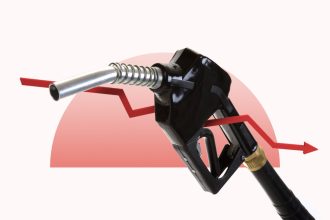Like drivers in many states, Pennsylvanians are required to carry a minimum amount of auto insurance. The state requirements provide for medical expenses and lost wages regardless of who caused the accident. As you can imagine, the penalties for driving without insurance in PA are steep to discourage drivers from going without coverage. Bankrate’s insurance experts are here to help you make sense of the requirements and penalties of driving without insurance. Plus, we’ll explain what to do if you’re in an accident without coverage.
Pennsylvania car insurance laws
Pennsylvania state law requires all drivers to have auto insurance. In order to meet the minimum requirement for insurance within the state, you must have 15/30/5 coverage. This means that if you get into an accident, you must be insured for coverage of up to:
First-party coverage typically pays for necessary medical expenses sustained by you or your passengers in the case of an accident. However, Pennsylvania has a unique approach to this coverage, treating it similarly to how other states treat personal injury protection (PIP). In Pennsylvania, first-party insurance must provide at least $5,000 of coverage for medical expenses regardless of who is at fault for the accident.
Pennsylvania is also one of a few states that operates on a choice no-fault insurance system. If you opt for the no-fault system, no matter who is at fault for an accident, your insurance must cover your medical costs and lost wages up to your policy limits. The insurance provider cannot deny you that coverage even if you are determined to be responsible for the accident. You also typically cannot sue the at-fault driver.
In Pennsylvania, if the driver chooses to maintain an at-fault policy, there are no limitations on filing third-party claims against the at-fault driver’s insurance policy or suing them in court.
However, the at-fault policy, sometimes called a full tort policy, typically costs more than no-fault coverage or limited tort policy. Limited tort policies lower insurance costs and reduce the number of lawsuits that follow an accident but also limit your options to pursue payments for damages if you are in an accident that is not your fault.
Penalties for driving without insurance in Pennsylvania
Despite the state’s requirements, some people still attempt to drive without insurance in Pennsylvania. While this could provide short-term savings, it may not be the best financial decision as you will be on the hook to pay expenses if you cause an accident and are likely to face fines and suspensions.
| Penalty type | First offense penalties |
|---|---|
| Fines | Minimum of $300 |
| Registration suspension | Three months plus $112 restoration fee or $500 plus $112 restoration fee |
| License suspension | Three months plus $94 restoration fee |
The penalties for driving without insurance listed above are for your first offense. Subsequent offenses could result in higher fines or penalties. Keep in mind that you would be unable to drive during the three months of your license suspension, and your car could not be driven by anyone while its registration is suspended.
There is one possible alternative. You may be able to prevent your suspension by paying a $500 fee, as well as a restoration fee. This option may be exercised once every 12 months, and only along with the submission of proof of current insurance. Doing so will keep you on the road without a suspension, but at a cost.
Getting into an accident without insurance
Getting into an accident, no matter where you live, can be expensive. It is made all the more financially devastating if you do not have insurance to help you cover the costs of an accident. Pennsylvania is one of few states that does not have an SR-22 requirement, which serves as proof of insurance that you are required to present after an accident or traffic stop. Despite no requirement for having an SR-22, you can still face significant legal and financial repercussions for being uninsured and getting into an accident.
If you do not have liability insurance, it is possible that you will be required to pay out of pocket to cover the other party’s medical bills and any property damage. This may mean liquidating assets in order to cover those costs, which could put your home and savings at risk. You could also be subject to a lawsuit from the other driver for being uninsured.
The cost of carrying minimum car insurance in Pennsylvania is likely to be significantly lower than the potential cost that you could face if you are involved in an accident while uninsured. Comparing multiple quotes is one of the best ways to find cheap car insurance companies in Pennsylvania to fit your budget.
How does driving without insurance in Pennsylvania affect future insurance rates?
You might think you’re saving money by going without car insurance, but you will most likely pay more for car insurance in the future. Your exact insurance rates will depend on how long your lapse in coverage is, whether or not you have other infractions on your driving record and if you’ve filed claims in the past.
To give you an idea of how much you might pay, consider these average costs. If you don’t have a lapse in coverage, you’ll pay an average of $2,436 per year for full coverage (or $517) per year for minimum coverage. If your insurance lapses, you can expect to pay around $2,694 per year for a full coverage policy (or $575 per year for minimum coverage).
Frequently asked questions
Methodology
Bankrate utilizes Quadrant Information Services to analyze February 2025 rates for all ZIP codes and carriers in all 50 states and Washington, D.C. Rates are weighted based on the population density in each geographic region. Quoted rates are based on a single, 40-year-old male and female driver with a clean driving record, good credit and the following full coverage limits:
- $100,000 bodily injury liability per person
- $300,000 bodily injury liability per accident
- $50,000 property damage liability per accident
- $100,000 uninsured motorist bodily injury per person
- $300,000 uninsured motorist bodily injury per accident
- $500 collision deductible
- $500 comprehensive deductible
To determine minimum coverage limits, Bankrate used minimum coverage that meets each state’s requirements. Our base profile drivers own a 2023 Toyota Camry, commute five days a week and drive 12,000 miles annually.
These are sample rates and should only be used for comparative purposes.
Incidents: Rates were calculated by evaluating our base profile with the following incidents applied: clean record (base) and lapse in coverage.
Read the full article here














